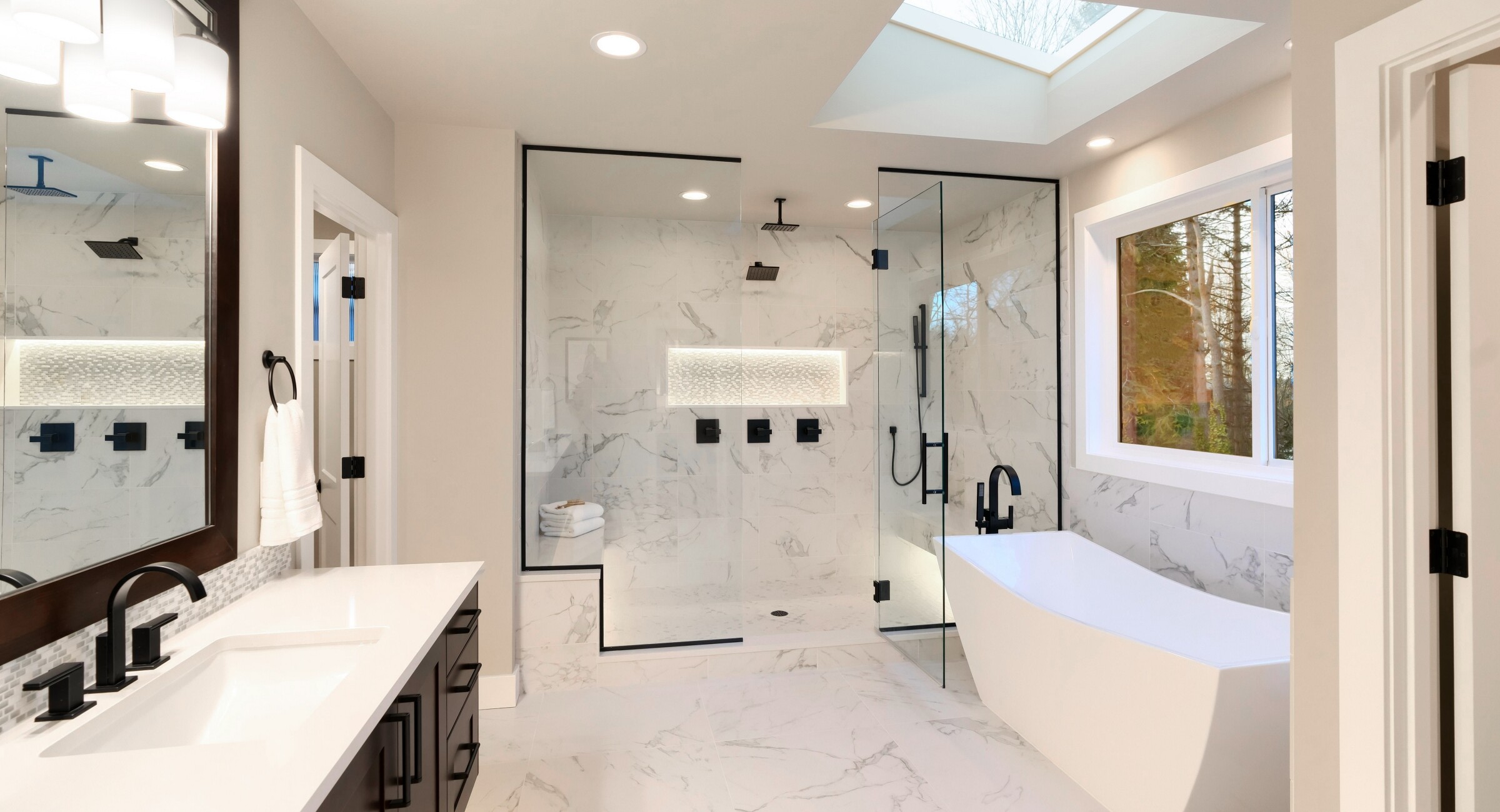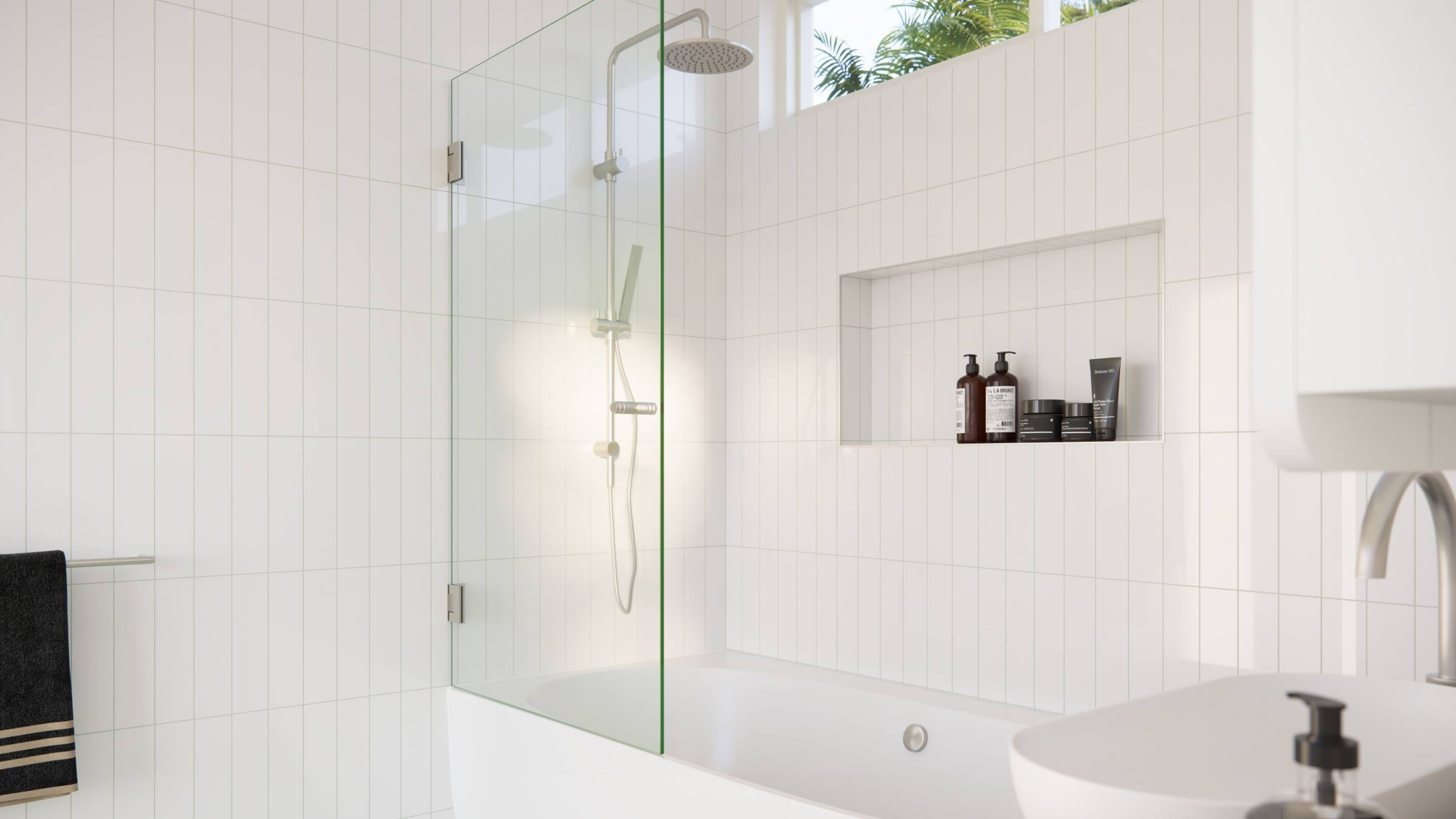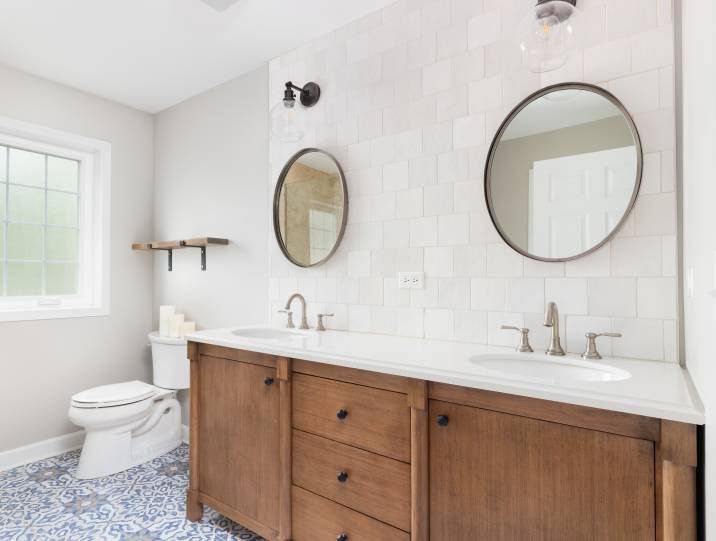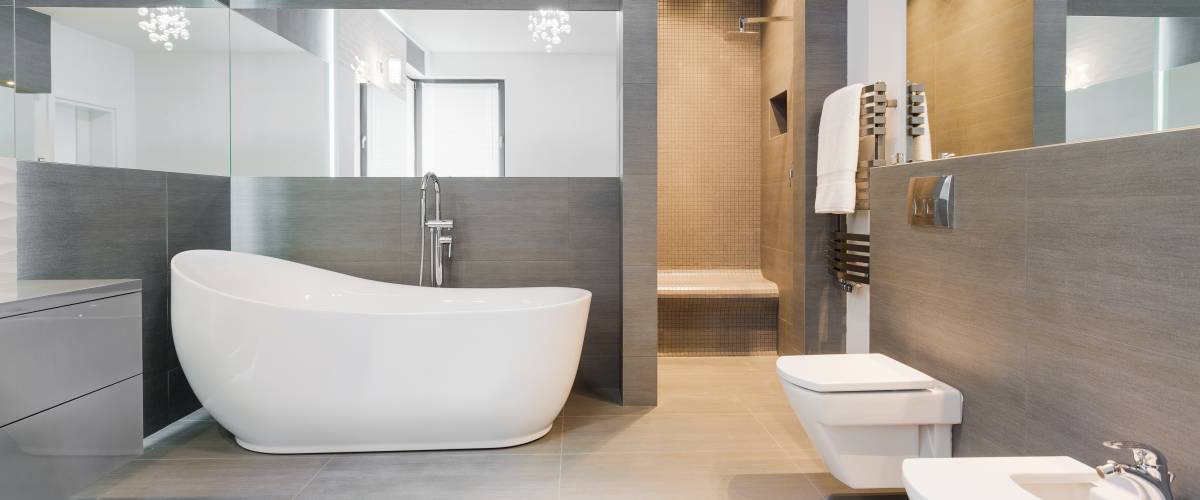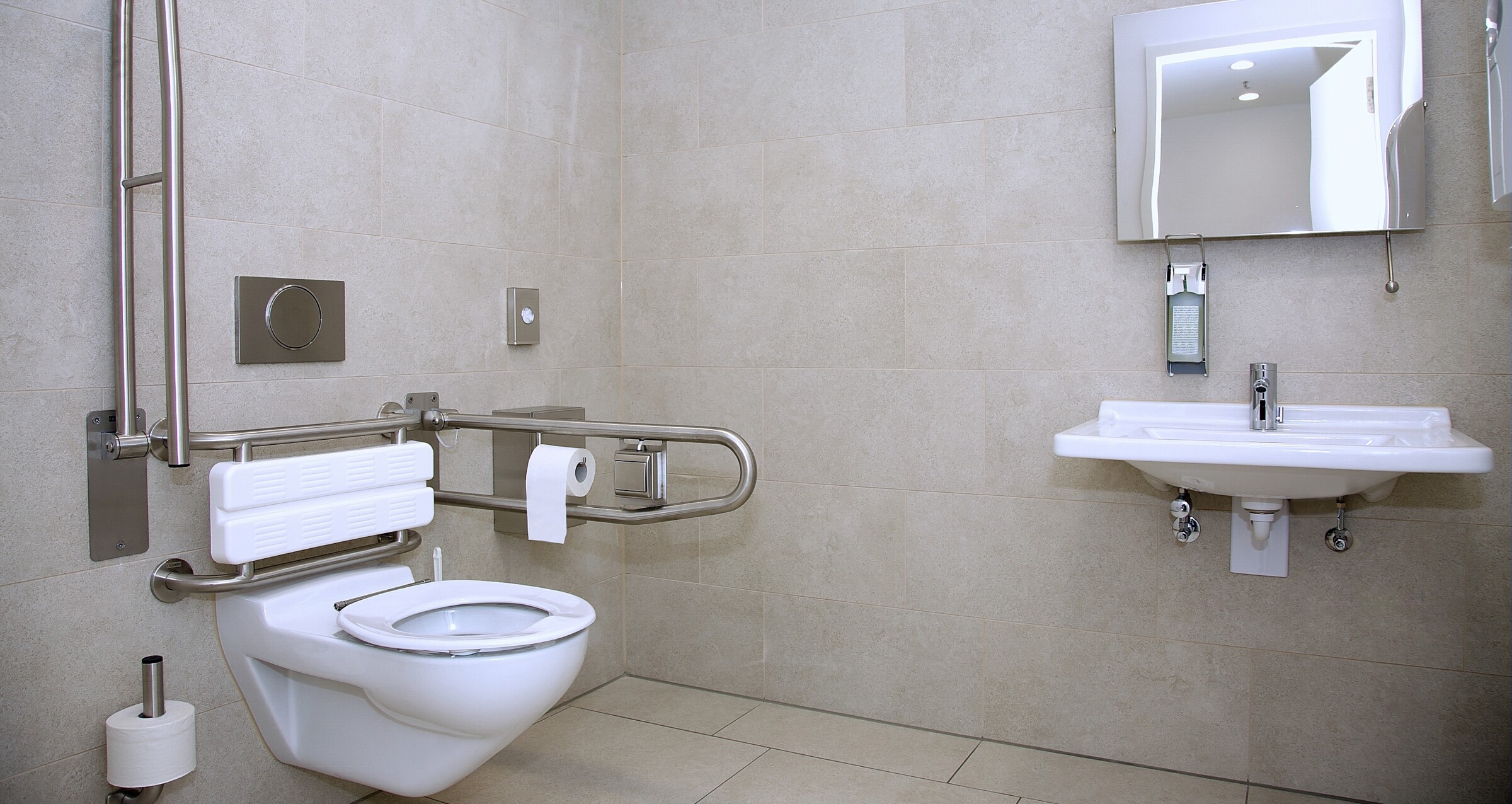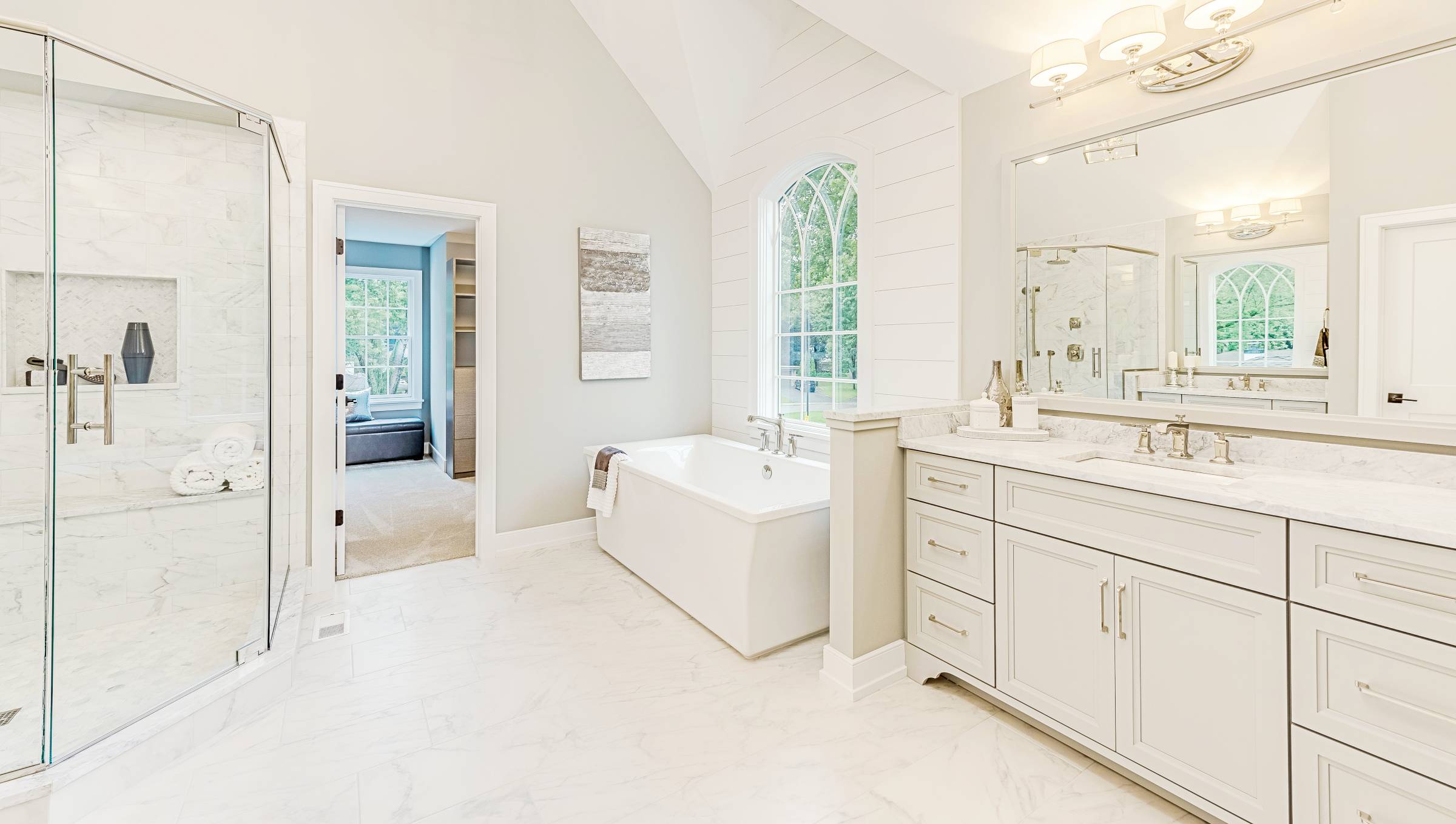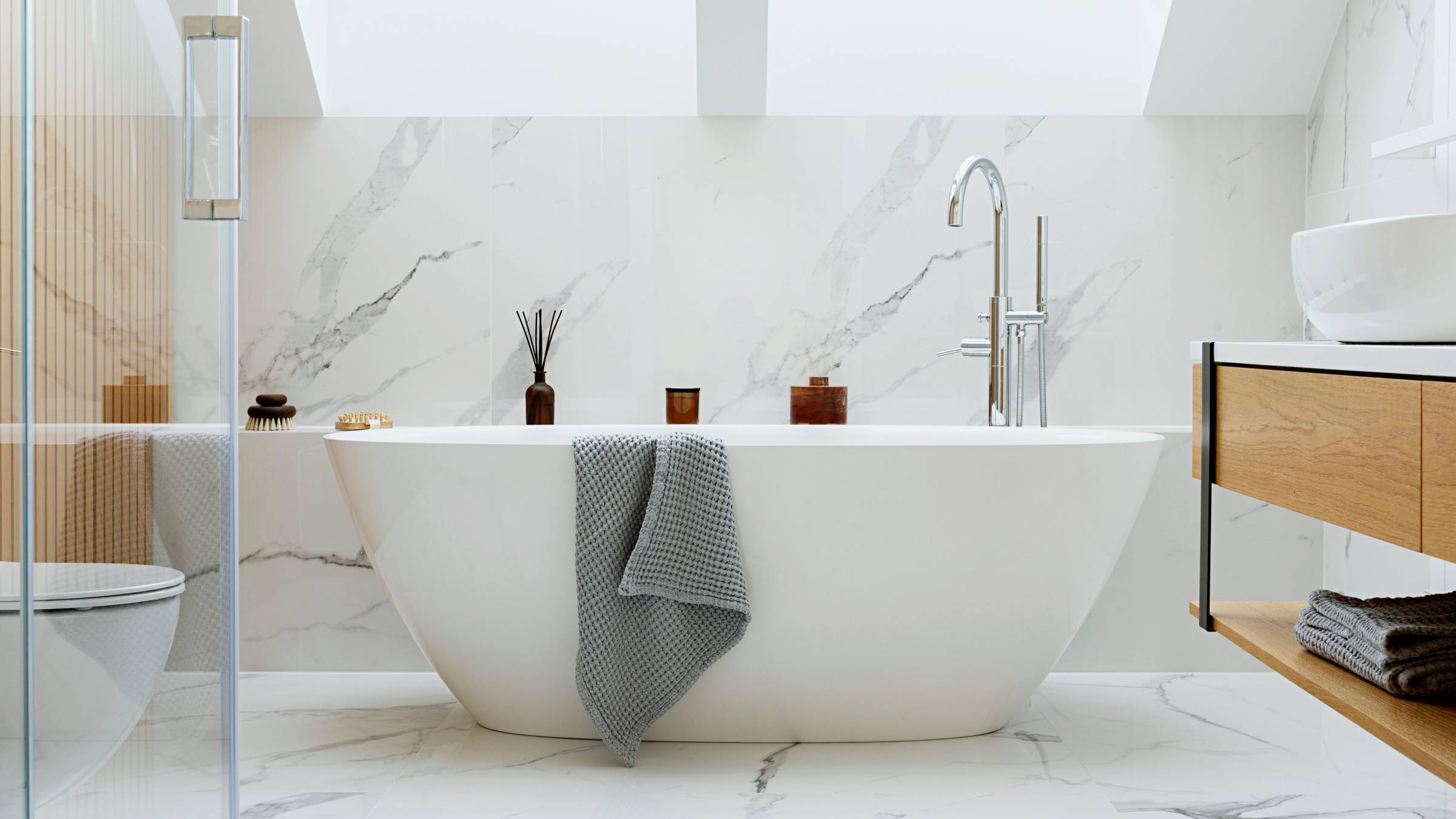- Home/
- Comparisons/
- Bathroom Renovation/
- Basin vs Sink
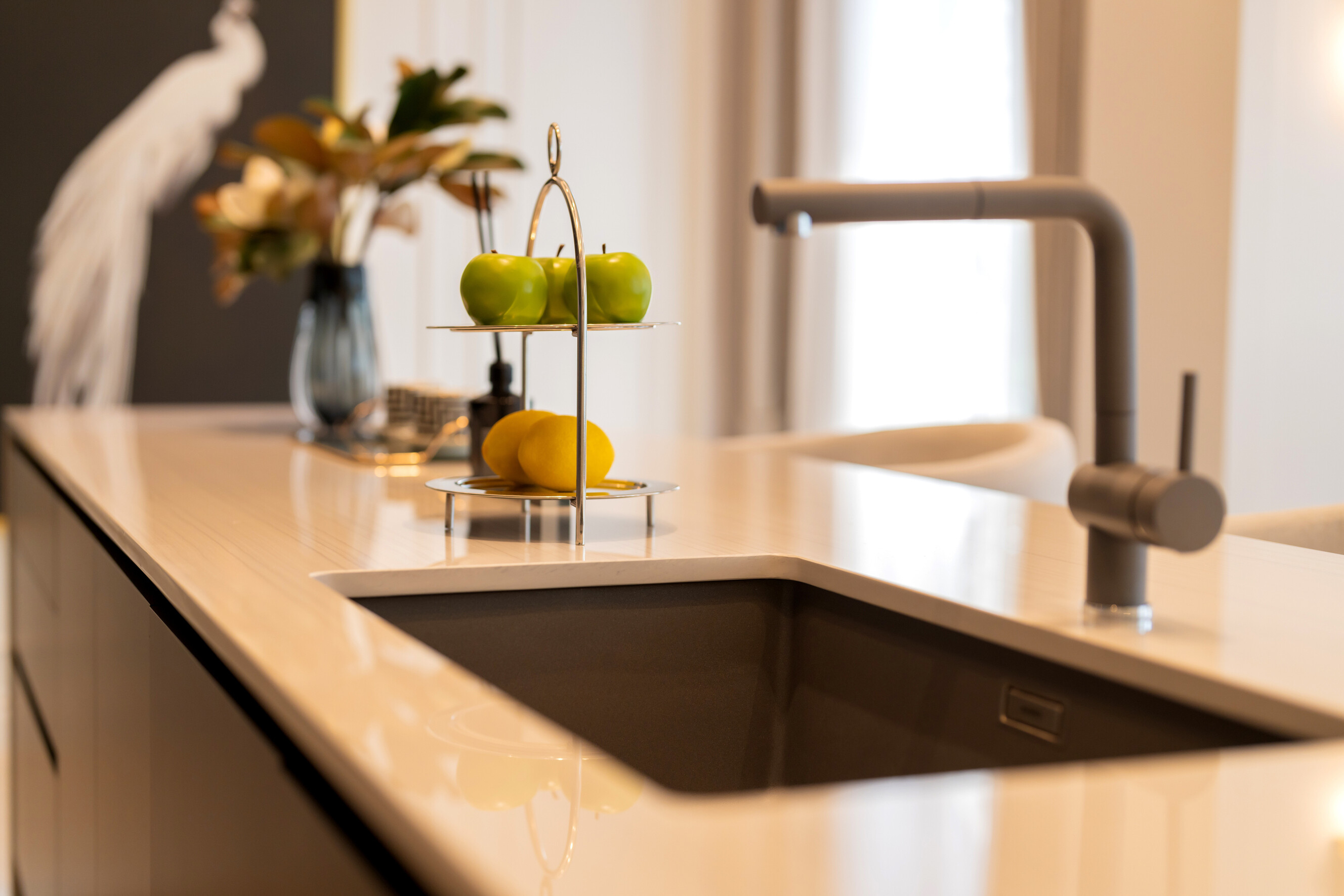
Basin vs sink: What’s the difference between them?
Explore the differences between a basin and a sink in terms of material, functionality, and more.
Hire a bathroom renovatorPublished on

Written by Angela A.
Staff Writer
Read more about our contributor
Key Facts
A sink is a large, deep fixture used in kitchens and utility rooms for washing dishes, food preparation, and heavy-duty cleaning tasks.
A basin is a bowl-shaped fixture typically found in bathrooms and used for washing hands, face, and teeth.
When designing your home, you might find yourself torn between choosing a basin or a sink. It’s a decision that goes beyond just function. You also need to balance practicality with aesthetics.
For instance, sinks are ideal for heavy-duty tasks in kitchens and utility rooms. Meanwhile, basins bring an element of style and elegance to bathrooms. The discussion between a basin vs sink will only start there.
This guide will help you know the differences and help you select the right fixture for your space. Make sure that both form and function align with your vision.
What is a sink?
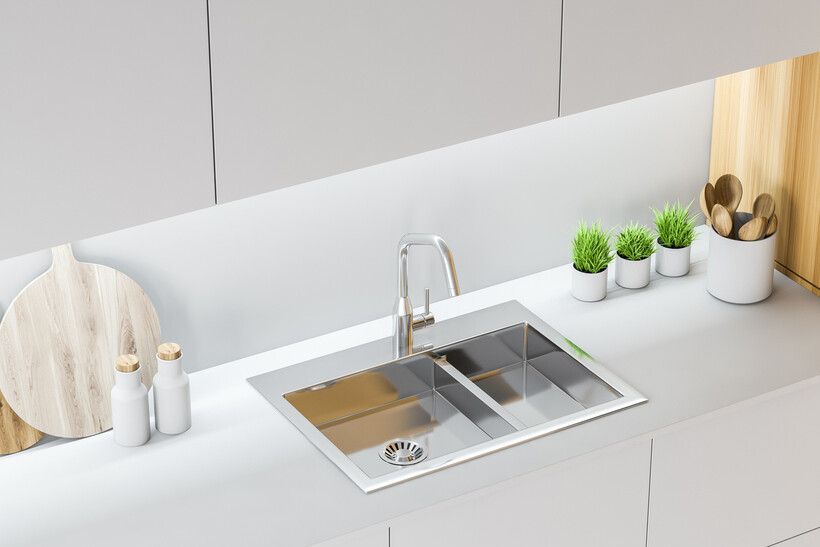 Kitchen worktop setup with a double sink. (Source: iStock)
Kitchen worktop setup with a double sink. (Source: iStock)
A sink is essentially a large, deep fixture found in kitchens, utility rooms, and sometimes even bathrooms. It’s designed for practical tasks like washing dishes, preparing food, or tackling heavy-duty cleaning.
Sinks can be made from various materials, including stainless steel, granite, and fireclay. Their primary purpose is to provide a functional area where you can clean not just dishes but also fruits and vegetables, making them an essential part of any home.
What is a basin?
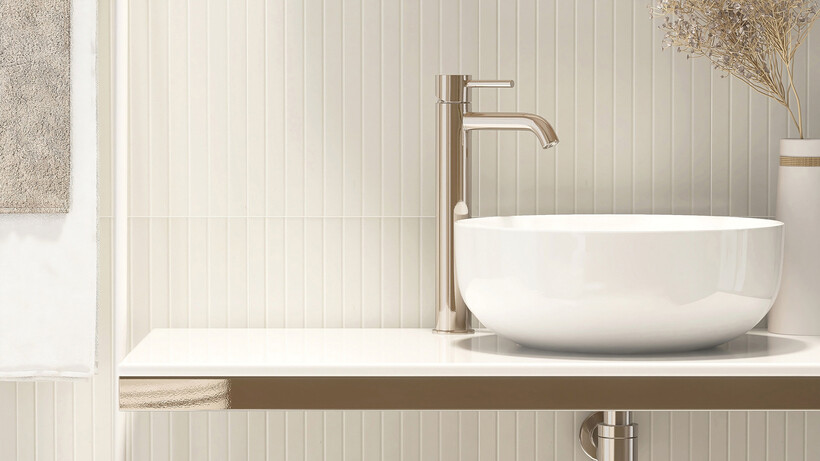 Bathroom design with a round white basin. (Source: iStock)
Bathroom design with a round white basin. (Source: iStock)
A basin is a bowl-shaped fixture you’ll usually find in bathrooms. Its main job is to help with personal hygiene tasks, like washing your hands, face, and teeth. Unlike sinks, basins hold a smaller volume of water, making them perfect for quick wash-ups.
They also come in a variety of materials, such as ceramic, porcelain, vitreous china, glass, acrylic, and metals. This gives you plenty of options to fit them into your bathroom’s style. Overall, basins are dedicated spots for your daily grooming routines.
Sink vs basin: Which one do you really need?
A sink and basin serve distinct purposes and bring their own set of advantages, so it's worth diving into what makes them different. Think about the functionality you require. Are you looking for a heavy-duty area for washing dishes in the kitchen or a stylish spot for your morning routine in the bathroom? Let’s explore these factors and see which fixture aligns best with your needs and style preferences.
In terms of size and shape
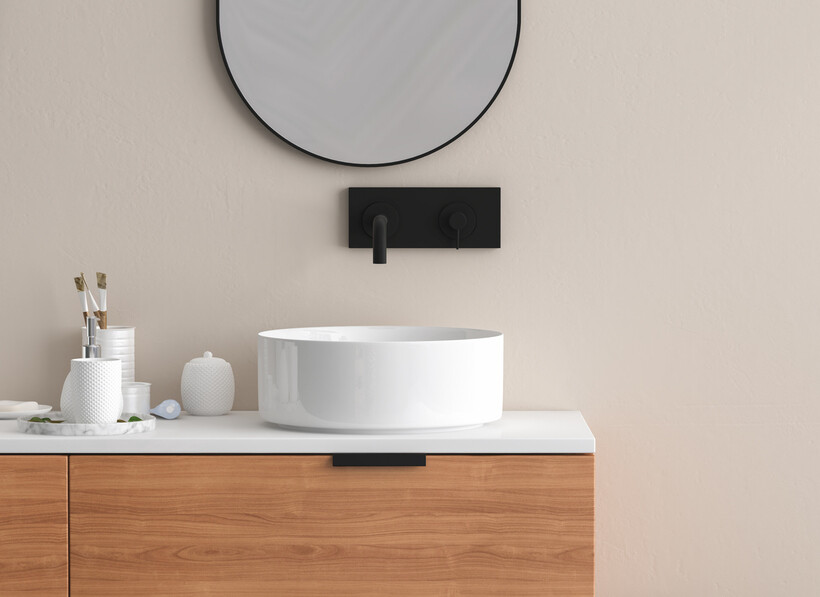 Contemporary bathroom featuring a vessel basin. (Source: iStock)
Contemporary bathroom featuring a vessel basin. (Source: iStock)
Basins are usually smaller, typically ranging from 30 to 50 cm in diameter, making them ideal for small bathrooms. They often come in compact designs, like the pedestal basin, which helps optimise space without sacrificing style for smaller restrooms.
In contrast, sinks are generally larger, especially in kitchens where they can span 56 to 84 cm in length. Depth varies, too, with standard sinks reaching 20 to 25 cm, and utility sinks going deeper for heavy-duty tasks. This size makes sinks suitable for a lot more uses, from dishes to food prep, unlike the smaller vanity sinks designed mainly for personal care routines.
Shape is another factor to consider. Basins offer a range of forms—round, oval, rectangular, and square. Sink designs tend to prioritise functionality, usually featuring rectangular or square shapes that maximise available space. There are also small hand wash basins for quick clean-ups.
In terms of functionality
Sinks significantly outperform basins when it comes to what you can do with them. A kitchen sink is designed for various tasks. It usually offers double basins for multitasking, spray nozzles for rinsing, and even waste disposal units for quick waste management.
On the other hand, basins primarily focus on personal hygiene. They serve as simple fixtures for washing hands and faces in popular bathroom designs.
In addition, you can clean larger items in sinks, like pots and pans. They may even have deeper basins and integrated drainboards to make the process more efficient. Basins typically lack these advancements, which limits their use to straightforward tasks such as brushing teeth or washing hands.
In terms of material
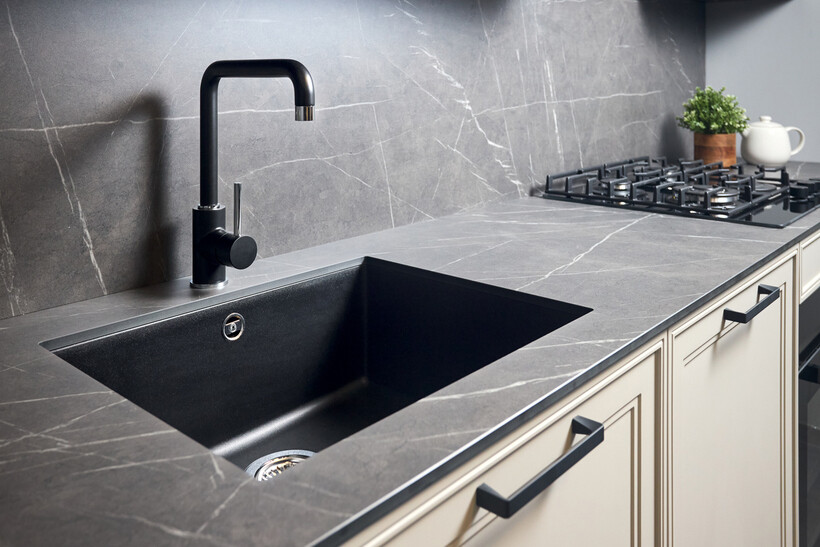 Kitchen interior with a gray worktop and integrated sink. (Source: iStock)
Kitchen interior with a gray worktop and integrated sink. (Source: iStock)
When remodelling a bathroom, the choice of material for a bathroom wash basin or sink is crucial. A ceramic basin is a popular option thanks to its durability and ease of cleaning. It also gives a traditional look that’ll fit well in various styles. Porcelain offers similar benefits but is more refined and tends to be more stain-resistant, making it a great choice if you’re looking for longevity.
For a modern bathroom sink, stainless steel is often the preferred material due to its high durability and resistance to heat and stains. While it’s commonly found in kitchens, its practicality can make it an appealing option for bathrooms as well. Alternatively, if you’re interested in a unique aesthetic, copper sinks provide antimicrobial properties but require more maintenance to keep them looking good.
If luxury appeals to you, consider the following:
Natural stone basins like granite or marble, which look elegant but need careful upkeep to prevent staining.
Granite composite, which combines durability with a range of colours, making it a versatile option.
Acrylic basins, which provide a lightweight solution that’s easy to clean and are often seen in contemporary designs.
In terms of installation
Another critical factor when comparing basins and sinks is their installation types. Basins can be countertop-mounted, wall-mounted, or pedestal-mounted. Sinks, on the other hand, typically employ top-mount, butler, or integrated installations. There are even some options designed specifically for kitchen use.
Sink installation costs can vary significantly based on the chosen style and material. For example, undermount sinks require sturdy countertops and can be more expensive to install than standard drop-in sinks. Meanwhile, basins might save you some money if you choose simpler installations like countertop-mounted or wall-mounted setups.
In terms of the output, both basins and sinks can offer seamless looks when installed properly. However, given that sinks are often required in kitchens and utility areas, their installation processes can involve more complex plumbing work.
Ultimately, though, the choice between a basin and a sink boils down to your specific needs and desired aesthetic.
In terms of cleaning and maintenance
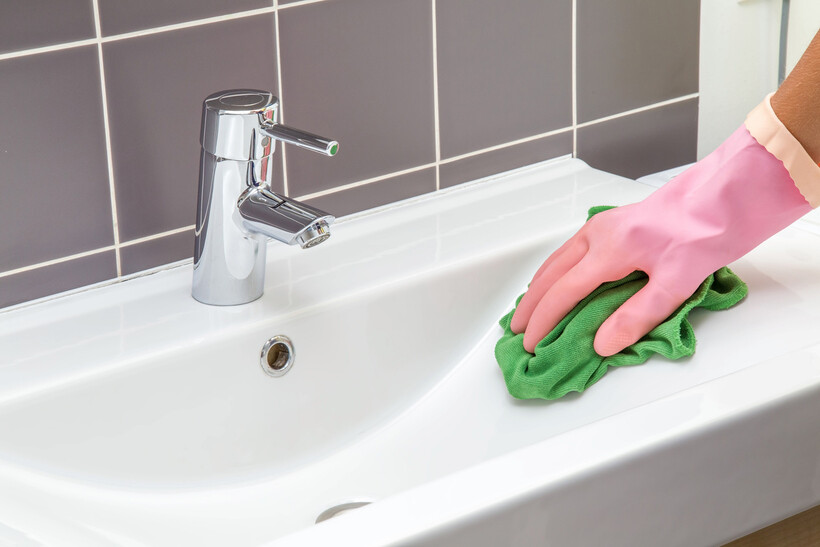 Basin cleaning with a cloth and rubber glove. (Source: iStock)
Basin cleaning with a cloth and rubber glove. (Source: iStock)
The steps in cleaning and maintaining basins and sinks can be quite similar, but material choice plays a big role. For ceramic and porcelain options, a mild soap and water solution works well, while fireclay can benefit from occasional use of a non-abrasive cleaner for deep cleaning. Regular inspections for chips or cracks are crucial, too, especially with ceramics.
For glass and acrylic, keeping them streak-free involves more routine cleaning—using a glass cleaner or non-abrasive cleaners alongside soft cloths will help. It's important to remember that glass needs to be handled with care to avoid breakage. Acrylics should also be maintained properly to avoid scratches by steering clear of abrasive products.
Metals present their own cleaning challenges. Stainless steel is straightforward, needing just mild soap, while copper requires special care to maintain its finish.
Ultimately, regardless of the material—whether it’s stone that needs sealing or metal that requires polishing—regular maintenance is key to keeping both basins and sinks in great shape.
In terms of cost
Are you aiming for an IKEA kitchen or a luxury bathroom? Regardless, knowing how much a new kitchen costs or what budget is needed for a bathroom upgrade is essential. After all, balancing quality and cost is key to ensuring your space is both appealing and within budget.
The price of a basin or sink can vary significantly based on the materials used and the style. Basic models are generally cheaper, while more unique designs can drive up the price.
Here’s a table summarising the price range of common sink designs:
Type of Sink |
Price Range |
|---|---|
Kitchen Sinks |
£50 - £1,200 |
Bathroom Sinks |
£85 - £220 |
Vanity Sinks |
£80 - £335 |
If you prefer to install a basin instead, here are ballpark estimates to consider:
Type of Basin |
Price Range |
|---|---|
Traditional Basins |
£45 - £125 |
Large Basins |
£30 - £100 |
Cloakroom Basins |
£30 - £100 |
Corner Basins |
£40 - 210 |
Wall-hung Basins |
£40 - £335 |
Inset Basins |
£60 - £185 |
Countertop Basins |
£40 - £265 |
Semi-recessed Basins |
£65 - £150 |
Space-saver Basins |
£40 - £95 |
Simplify your renovation: Find experts for your basin and sink installation on Airtasker
In the end, choosing between a basin and a sink is more than just a simple decision. Whether you opt for a sleek basin to enhance your bathroom’s aesthetics or a durable sink for your kitchen’s functionality, understanding your choices is essential.
But if the thought of installation feels a bit overwhelming, don’t worry—you can make it hassle-free by posting your task on Airtasker. Connect with professionals who are ready to help with your kitchen upgrade or bathroom renovations.
So, why not take the next step in your home renovation journey? Post a task today and meet skilled Taskers who can bring your vision to life.
Learn more about our contributors

Written by Angela A.
Staff Writer
Angela Apolonio is an experienced writer with a Biology background. She writes about home tips, car upkeep, gardening hacks, and food facts, bringing a unique blend of science and practicality to her work. As a wife and a mother, she knows the value of iron-clad routines, so she's passionate about sharing what works for her with everyone else. She loves making everyday life simpler and helping readers find fresh ideas to bring more joy into their spaces.
Basin vs Sink
Basin |
Sink |
|
|---|---|---|
Size and Shape |
Smaller, bowl-shaped, ideal for bathrooms |
Larger, often rectangular, suitable for kitchens |
Functionality |
Primarily for personal hygiene tasks like washing hands |
Versatile, used for washing dishes, food prep, and cleaning |
Material |
Commonly ceramic, porcelain, vitreous china, glass, acrylic, metals |
Often stainless steel, granite, fireclay, or copper |
Installation |
Can be countertop-mounted, wall-mounted, or pedestal-mounted |
Typically top-mount, undermount, or butler styles |
Cleaning and Maintenance |
Easy-to-clean, maintenance depends on material |
Requires regular cleaning, more complex maintenance for metals |
Cost |
Generally cheaper, especially for basic designs |
Can be more expensive, especially for high-end materials |
FAQs on basins and sinks
A sink that features two separate bowls or basins is called a double-bowl sink and is typically used in kitchens to separate washing and rinsing areas. It is also referred to as a dual sink.
A basin is a general term for a bowl-shaped fixture used for washing, while a washbasin specifically refers to a basin used for personal hygiene tasks.
Standard kitchen sinks range from 56 to 84 cm in length and 56 cm in width, with a depth of 20 to 25 cm. Bathroom sinks typically vary widely but are generally smaller than kitchen sinks.
Find bathroom renovations, fast
Post a task
Related articles
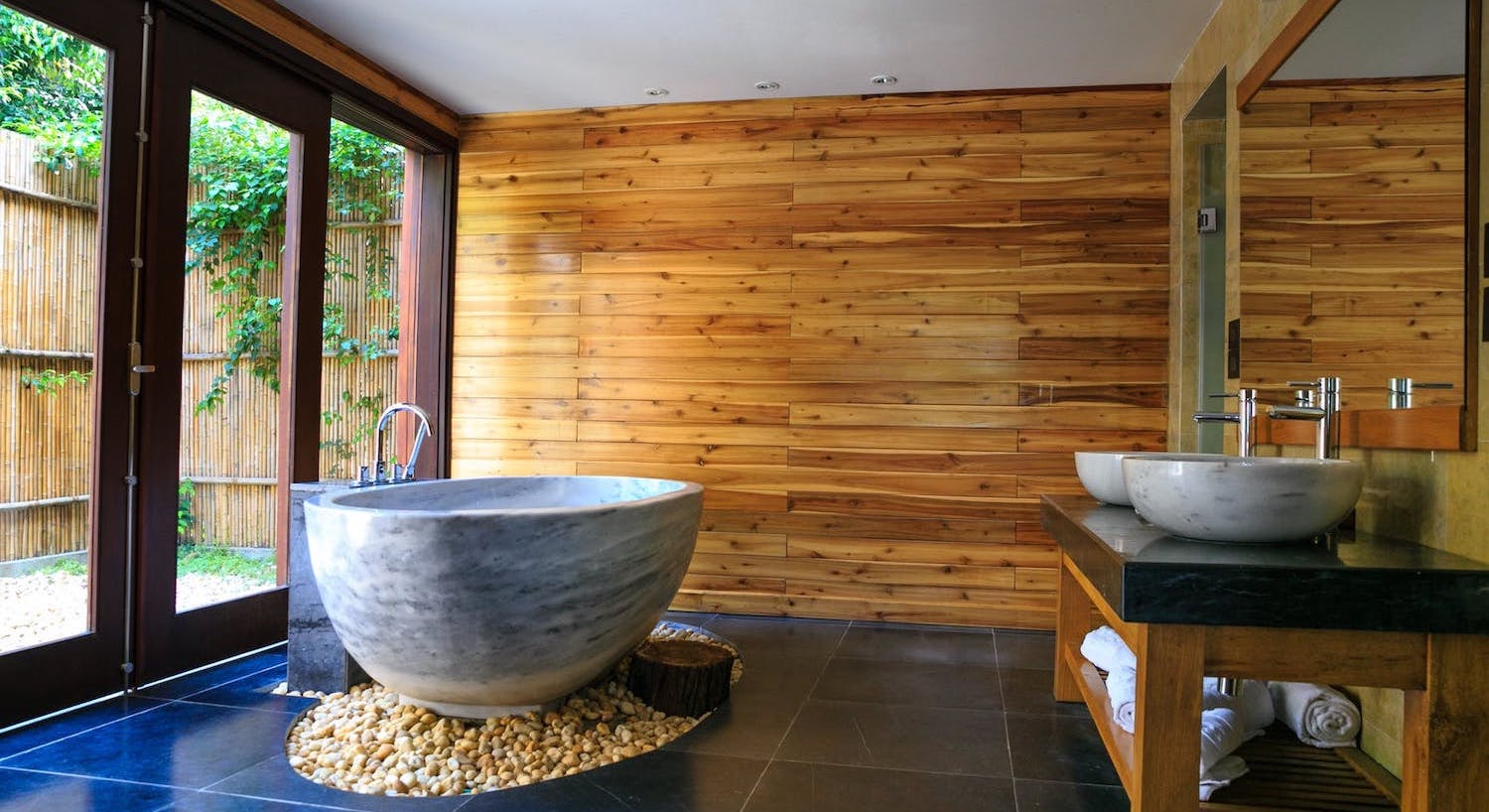
How to Remodel a Bathroom
Read more
Related price guides
